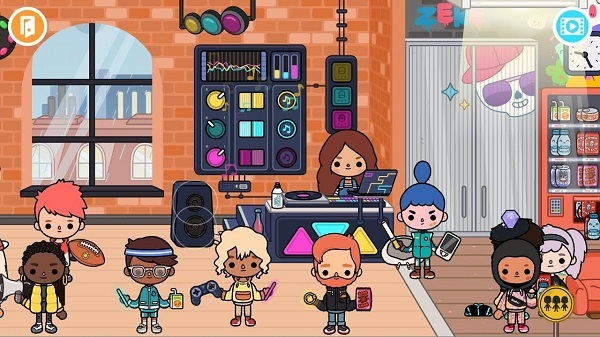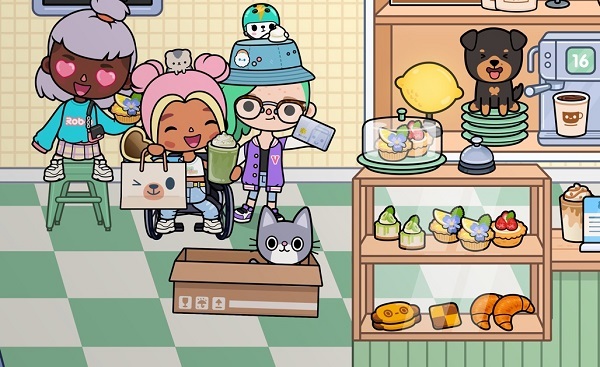Introduction
Toca Life gives players an open-ended canvas where they can craft their own narratives, exploring character interactions, relationships, and world-building in any way they choose. However, players often find it challenging to keep their storylines consistent and character-focused over time. This article delves into the issue of maintaining narrative consistency in Toca Life, exploring techniques that help players craft cohesive, memorable stories that deepen their connection with each character.
Establishing Core Character Traits
For a narrative to stay consistent, each character needs well-defined traits that guide their actions and responses.

For a narrative to stay consistent, each character needs well-defined traits that guide their actions and responses.
Setting Up Unique Personalities
Each character should have distinct personality traits. By giving them characteristics such as bravery, curiosity, or shyness, players can ensure that the characters’ behaviors align with their core nature in various situations.
Examples of Personality Traits
Curiosity: This character is always seeking new adventures.
Timid: Prefers quiet environments and tends to avoid large groups.
Using Quirks and Habits for Depth
Quirks such as specific habits or favorite items give each character an identity. A character who always brings their favorite snack or pet along will have consistent, recognizable traits.
Building Character Relationships
Strong relationships make characters more relatable and add depth to the story.
Developing Friendships and Rivalries
Assigning characters roles as friends or rivals helps establish dynamics that players can explore. For instance, best friends might share a passion for animals, while rivals might always compete in games or skills.
Types of Relationships
Best Friends: Share common interests or team up for adventures.
Rivals: Compete over achievements or friendships, adding tension.
Fostering Family Bonds
Family connections bring warmth and loyalty to the story, creating opportunities for characters to show affection, help each other, or handle conflicts together.
Creating Character Goals
Clear goals provide direction, helping to guide characters’ actions and decisions.
Defining Short-Term Objectives
Short-term goals, such as finding a new pet or learning a skill, create scenarios that are easy to accomplish, adding progress to the story without long-term planning.
Examples of Short Goals
Finding a Hidden Item: A character hears rumors of a secret spot and wants to uncover it.
Hosting a Gathering: Setting up a party or event to bring friends together.
Long-Term Goals for Growth
Long-term goals, like opening a café or completing a large project, keep the narrative going over multiple play sessions.
Introducing Story Arcs with Meaningful Progress
Story arcs allow for planned progression, evolving characters over time.
Short Story Arcs
These arcs resolve quickly, providing closure and satisfaction. For instance, a character might be on a quest to help a friend or find a missing item, which can be achieved in a few scenes.
Examples of Short Arcs
The Lost Toy: A character loses a prized possession, and friends band together to search.
Secret Adventure: Characters secretly plan a fun outing, adding excitement.
Long-Term Story Arcs
These arcs build over time, giving characters room to grow and change. A long-term arc could involve a character saving money to start a project or overcoming a personal challenge.
Using Locations to Enrich Interactions
The different settings in Toca Life provide unique atmospheres for scenes.

The different settings in Toca Life provide unique atmospheres for scenes.
Choosing Locations by Theme
Locations should align with the mood of the scene, whether it’s a bustling café or a quiet forest.
Location Examples
Café for Social Gatherings: Ideal for group interactions or casual meetups.
Park for Outdoor Adventures: Suitable for exploration and sports.
Reimagining Locations for Variety
Using the same location creatively can keep it fresh. For example, a classroom can double as a meeting space, or a hospital might serve as a dramatic turning point in the story.
Introducing and Resolving Conflict
Conflict adds excitement and helps characters learn and grow.
Planning Meaningful Conflicts
Personality clashes, misunderstandings, or opposing goals create realistic conflict, driving character development.
Examples of Conflicts
Jealousy Among Friends: A character feels left out, leading to a rift.
Differing Goals: Two characters want to take the story in different directions.
Resolving Conflicts for Growth
Once conflict arises, it should be resolved in a way that reflects each character’s growth, whether through compromise, apology, or understanding.
Integrating Surprises and Twists
Unexpected twists keep the story interesting and give characters new motivations.
Adding Small Surprises
Small twists, like finding a hidden item or receiving a surprise gift, can add layers without changing the storyline too drastically.
Examples of Small Twists
Secret Note: A character finds a mysterious note, sparking curiosity.
New Visitor: A new character or pet joins, adding excitement.
Building Major Plot Twists
Major twists, such as a character moving away or revealing a hidden talent, add depth and may change the course of the story entirely.
Tracking Character Development
As characters progress, keeping track of their development ensures consistency in behavior and motivations.
Creating Character Timelines
A timeline tracks significant moments, helping players remember what each character has experienced and how it affects them.
Timeline Components
Events: Major incidents like parties, conflicts, or discoveries.
Relationships: Friendships and rivalries formed over time.
Reviewing for Continuity
Revisiting the timeline helps in identifying gaps or inconsistencies, making adjustments for continuity.
Using Props and Costumes Effectively
Props and costumes add realism to character interactions, reflecting their role or mood.
Choosing Thematic Props
Props that align with a character’s interests or the scene’s theme make interactions more meaningful. A character interested in art, for example, might carry a sketchbook.
Examples of Prop Use
Celebrations: Balloons, hats, and gifts for birthdays or special events.
Daily Routines: Books, instruments, or pets that accompany characters.
Reflecting Growth with Costumes
Costumes can show character development, such as a character dressing more confidently or wearing uniforms for certain roles.
Incorporating Player Input and Feedback
Toca Life has an interactive player community that’s full of ideas and inspiration.
Learning from the Community
Connecting with other players can spark creativity and provide fresh story ideas. Forums, social media, and fan pages are great places to find story prompts or new ways to use familiar characters.
Community-Inspired Ideas
New Character Roles: Introduce a teacher, artist, or explorer based on community suggestions.
Story Prompts: Adopt ideas from other players to keep stories fresh.

Adopt ideas from other players to keep stories fresh.
Conclusion
Creating consistent character narratives in Toca Life requires deliberate planning and a focus on personalities, goals, and settings. With thoughtful character traits, meaningful interactions, and engaging story arcs, players can build narratives that not only entertain but also deepen their connection to the characters and world. By incorporating feedback from other players and utilizing in-game resources creatively, players can continually expand and enrich their Toca Life experience.


